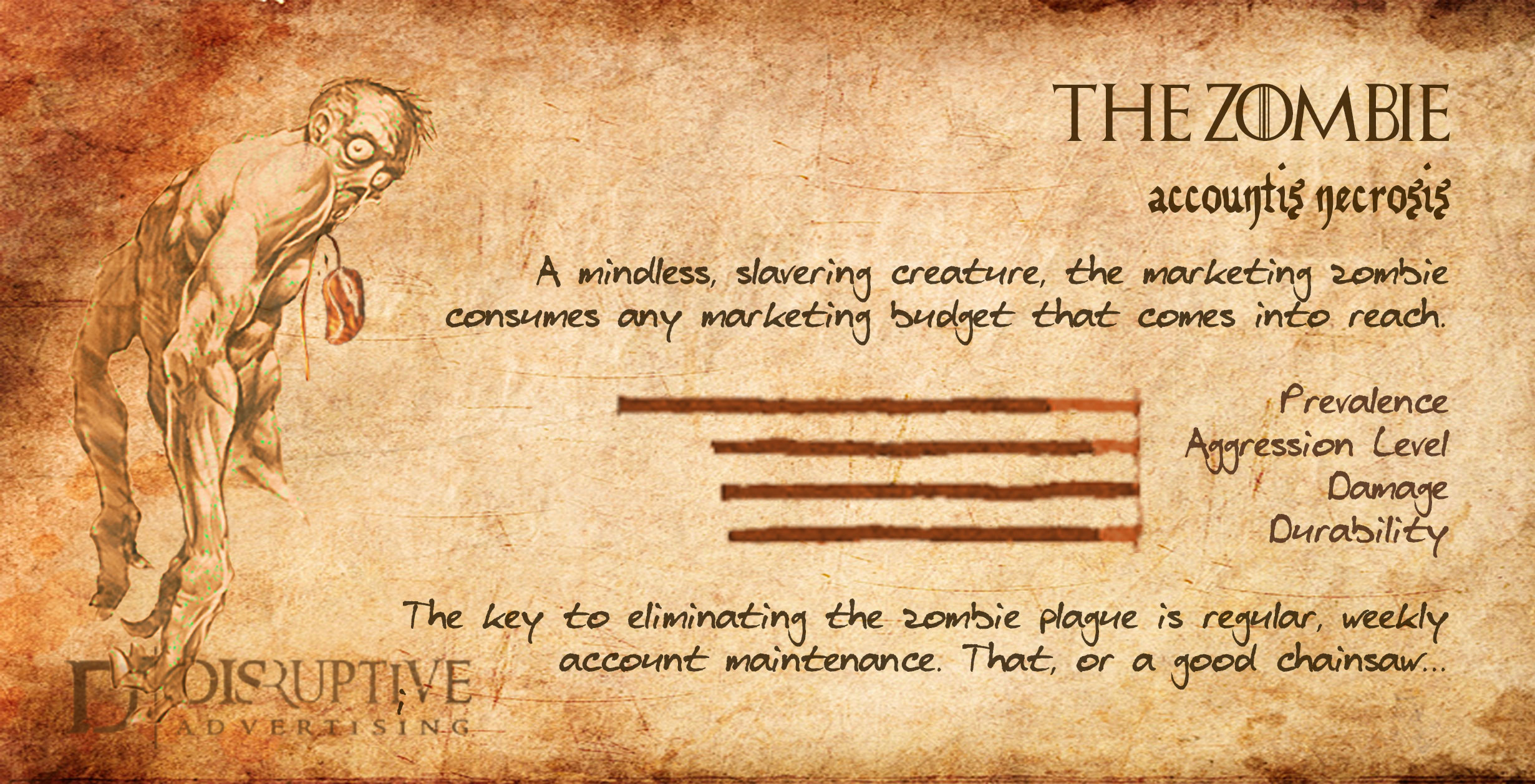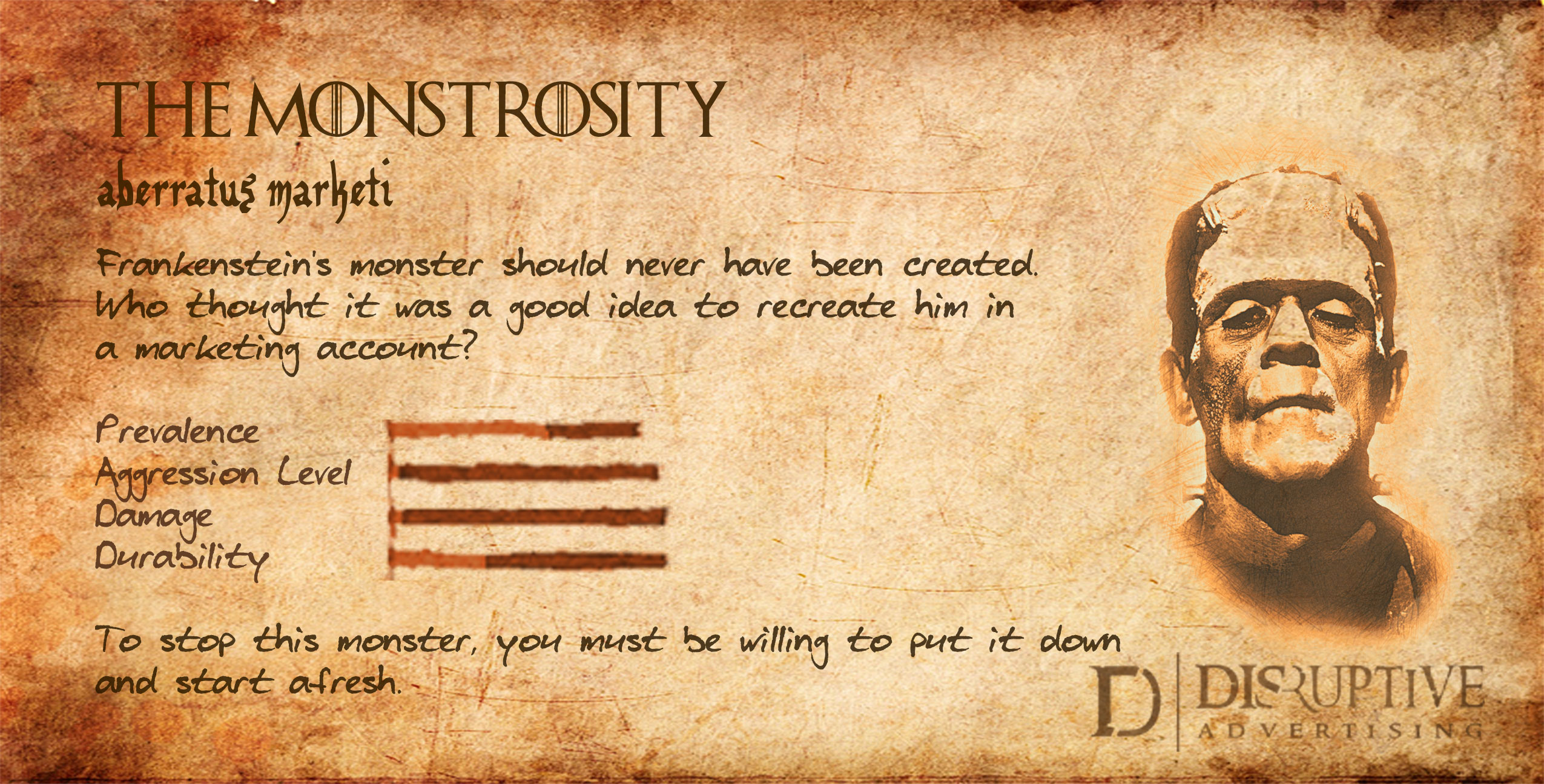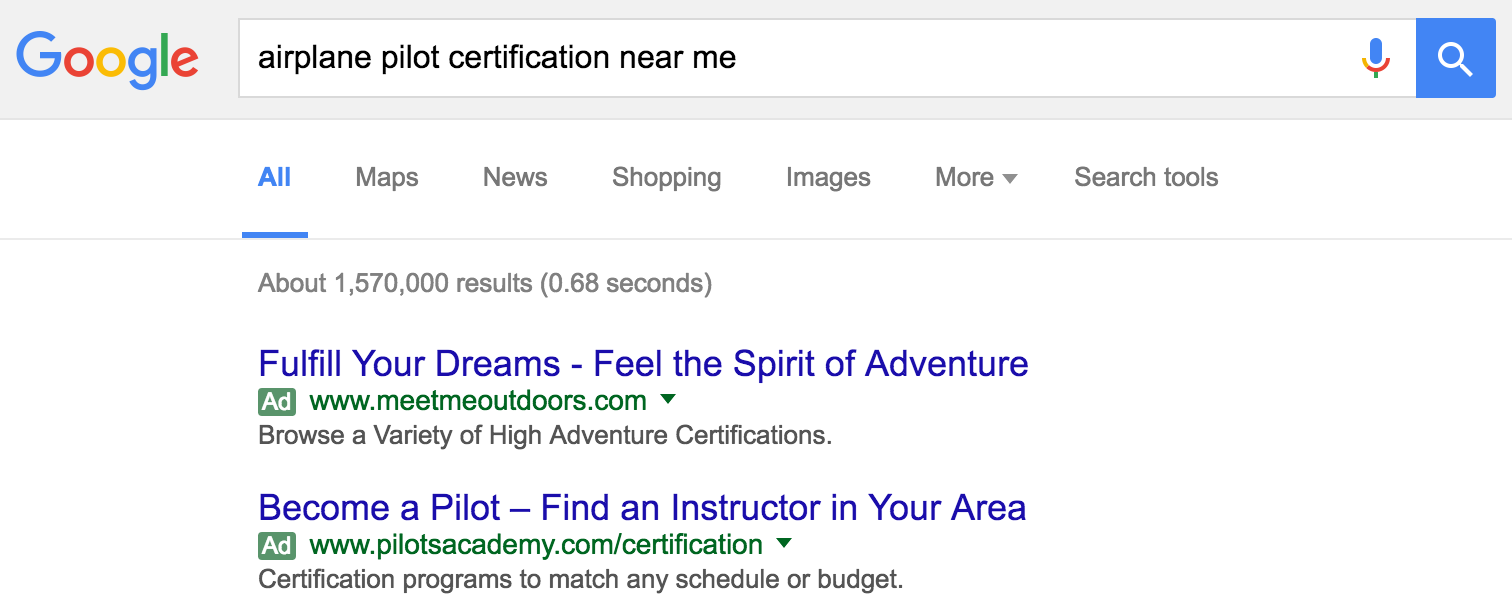Ever felt a knot in your stomach after opening your AdWords account? That cold, all-too familiar chill that tells you something just isn’t right?
There are a lot of reasons why AdWords might stress you out—your keywords aren’t performing, your spend isn’t producing results, your profit margins aren’t high enough—but even if things are going fairly smoothly, sometimes you just get a sense that something is off with your campaigns.
As we recently discovered at Disruptive Advertising, there’s more to that feeling than you might think…
Here There Be Monsters
As human beings, we have an inexplicable fear of the unknown, of the idea that there may be unspeakable powers beyond our control that are just waiting for us to make a mistake.
As it turns out, there’s a reason we feel that way.
Whether we realize it or not, monsters in some form or another really do stalk our steps. And, as far as I can tell, these monsters seem to be particularly prevalent in paid search advertising.
Here are 3 of the monsters you may be facing in your AdWords advertising efforts:
1. Zombified Account Management
When you think of zombies, what image comes to mind? Do you picture undead corpses lumbering around in search of brains?
Well, unfortunately, that description is a fairly accurate portrayal of many AdWords account managers.
Now, like most zombies, these account managers probably don’t realize that they are the walking dead, but the fact remains, they spend the majority of their time wandering around aimlessly and consuming any marketing spend that comes within reach.
Don’t believe me? Take a look at the change history in your AdWords account.
If your account manager (or heaven forbid, you, if you manage your own accounts), hasn’t made a change in the last month, you’ve just uncovered evidence that your AdWords account is suffering from a zombified account manager.

Just like the zombie hordes depicted in the media, it seems like account management zombies outnumber their living counterparts by a considerable margin. According to Larry Kim, just 1 out of every 10 paid search account managers consistently works on their accounts on a quarterly basis.
In our own audits, we’ve found that 72% of accounts haven’t been optimized in over 4 weeks.
Fortunately, you don’t have to resort to violence to get rid of zombified account management. Instead, you just need to start looking at your AdWords accounts on a regular basis.
Getting Rid of the Zombies
Have you ever wondered how zombies ever catch anyone? They are loud, slow and stupid. All you have to do is run, right?
Unfortunately, if you let your guard down, even something as loud, slow and stupid as a zombie will eventually find a way to get you. The key to escaping a zombie—whether physical or digital—is constant vigilance.
Of course, just how vigilant you need to be depends on how big of a target you are for the zombies—in other words, how big your traffic and budget are.
For example, if your AdWords budget is over $10,000 a month, you should be reviewing your campaigns at least once a week. However, you really should be looking at your account at least 3 times per week. For a new campaign, you should be checking on things at least 3x per day.
On the other hand, if your budget is smaller than $10,000 per month, you may only need to check on things once or twice a month.
To be honest, if your campaigns are running smoothly, you may not need to make major changes every time you check on things, but if you want to avoid becoming an AdWords management zombie, you need to be looking at and working on your account on a very regular basis.
2. Frankenstein’s AdWords Campaigns
Another creature I commonly see lurking in paid search campaigns is Frankenstein’s monster.
Often, as marketers, we have a hard time letting go of the past. If a particular keyword or ad used to perform well but has stopped producing for some reason, it’s easy to look for ways to bring that success back.
In our efforts to breathe life back into dead marketing efforts, we cobble together new campaigns from our favorite parts of the old ones. Then, we juice things up with a little marketing budget and celebrate when it starts to move…

The only problem is that—like Frankenstein’s original creation—these hybridized campaigns rarely turn out the way you expect.
Instead of driving value for your business, your misshapen marketing monstrosity typically wreaks havoc in your account. With all the mismatched keywords and ads in your campaigns, you end up with internal keyword competition and ad copy that doesn’t match the search intent of your audience at all.

The problem is, while some of your old standby keywords or ads may still have value, your old campaigns stopped working for a reason. They died because something about your business or your market changed.
As a result, if you try to bring dead campaigns back to life, you’re much more likely to produce a monstrous mash-up than a successful AdWords campaign.
However, if this situation sounds familiar, I’ve got good news. To get rid of your personal Frankenstein’s monster, all you have to do is stop running your stitched-together campaign(s).
If you can, learn from what worked in your old campaign(s) and apply that knowledge to a new campaign, but let your dead campaigns rest in peace.
3. The Jekyll and Hyde Experience
Say you’re interested in learning how to fly a plane. You know you need to get certified, so you type “airplane pilot certification near me” into Google and get the following results:

Pretty good so far, right?
The first ad doesn’t quite seem to be a match for what you’re looking for—it doesn’t mention flying, pilots or certifications anywhere—but the second ad looks perfect!
Eager to see exactly what this site has to offer, you click on the ad, licking your lips in anticipation (a bit of a creepy response to paid search advertising, I know, but it’s Halloween, so work with me here).
Suddenly, you find yourself on this page:

Feeling confused?
You searched for “airplane pilot certification near me”, clicked on what appeared to be a highly relevant ad and then ended up on a page that seems to be about scuba diving?

Now, if you take the time to read the headline, you might notice that it says “Learn to fly today!” So, the page isn’t completely irrelevant. In fact, if you use their page, you just might end up with the results you were looking for.
The problem is, aside from the headline, everything else about the page tells you that you are on a scuba diving site. As perfect as the ad seemed, the landing page did not meet your expectations.
You’ve just had a Jekyll and Hyde experience.
Unfortunately, whether it’s creating ads that send traffic to your homepage, a one-size-fits-all landing page or a landing page with insufficient tweaking (ill-advised dynamic keyword insertion, perhaps?), most paid search accounts seem to struggle with this sort of multiple personality disorder.
Basically, they draw their traffic in with Jekyll and then surprise and horrify them with Hyde.

If you don’t want to unleash Hyde on your unsuspecting potential customers, you need to take the time to create specific landing pages that match the search intent of your audience.
At a minimum, every marketing campaign should have its own landing page and—where necessary—you should build specific landing pages for different groups of closely-related keywords.
Conclusion
Although the monsters hiding in your AdWords account might not be as easy to spot as the monsters you see portrayed on TV, they can be just as destructive to your campaigns.
Fortunately, eliminating these creatures is fairly simple. With a little extra work, you never need fear your AdWords account again…
Have you run into these monsters in your AdWords account? What other “monsters” have you encountered?
About the author:

Jacob is a passionate entrepreneur on a mission to help businesses achieve online marketing success. As the Founder & CEO of Disruptive Advertising, Jacob has created an award-winning, world-class organization that has helped hundreds of businesses grow using pay-per-click advertising and conversion rate optimization.

